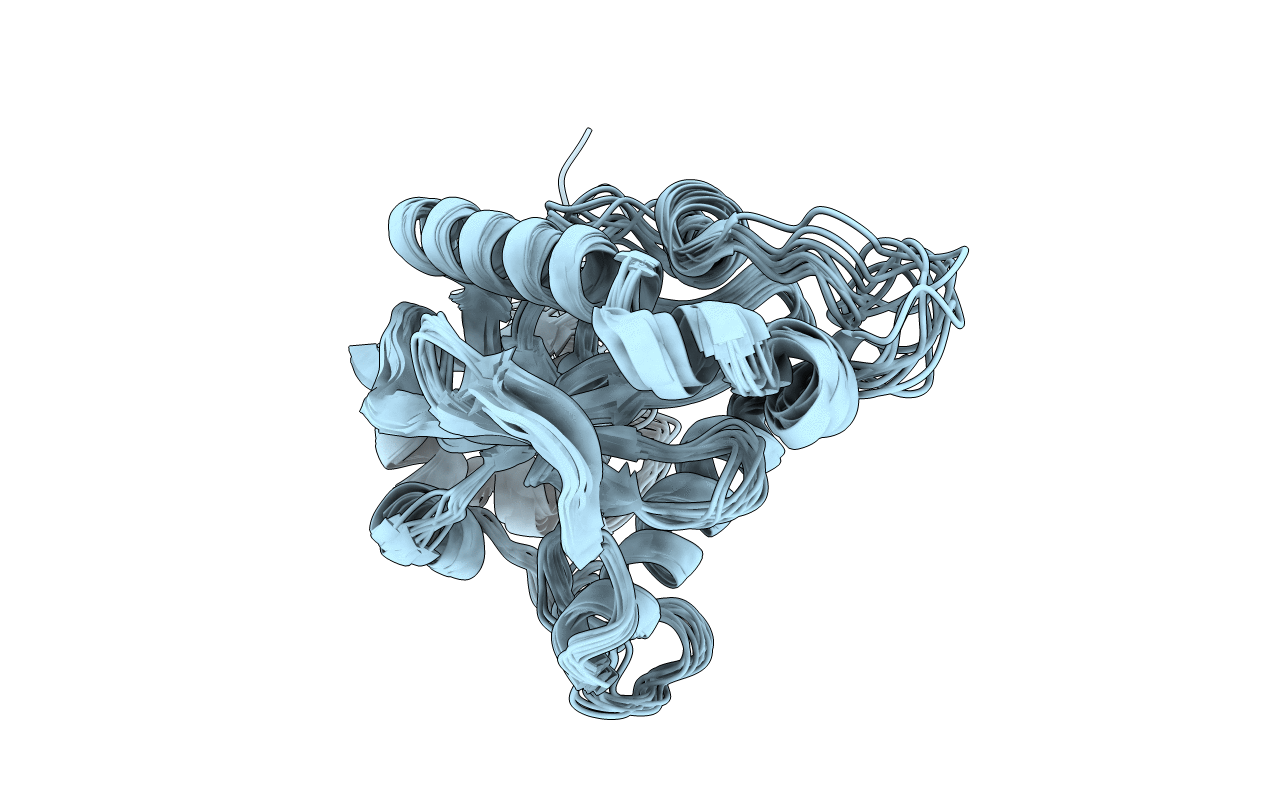
Deposition Date
2006-10-03
Release Date
2007-03-06
Last Version Date
2024-05-29
Entry Detail
PDB ID:
2ILX
Keywords:
Title:
Solution structure of catalytic domain of rat 2',3'-cyclic-nucleotide 3'-phosphodiesterase (CNP) protein
Biological Source:
Source Organism:
Rattus norvegicus (Taxon ID: 10116)
Host Organism:
Method Details:
Experimental Method:
Conformers Calculated:
200
Conformers Submitted:
10
Selection Criteria:
structures with the lowest energy and the least restraint violations


